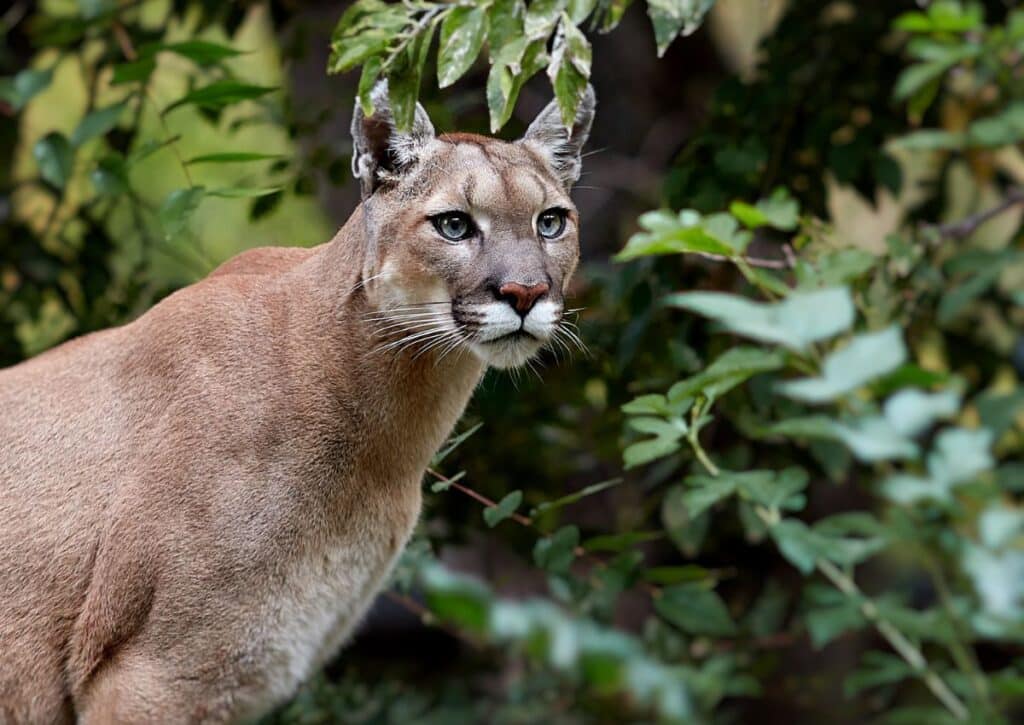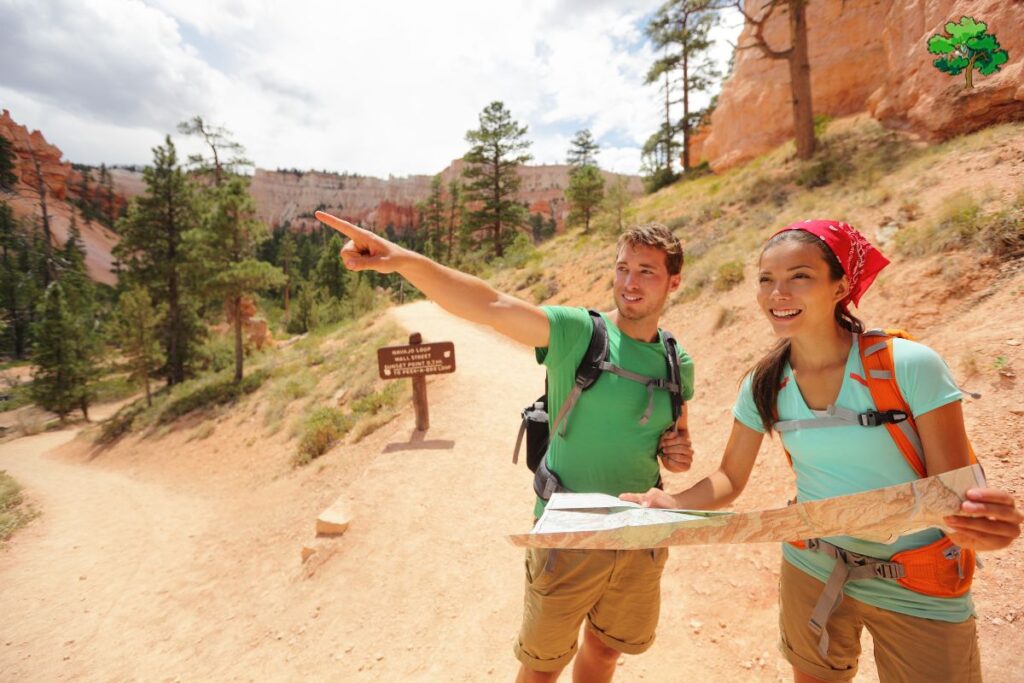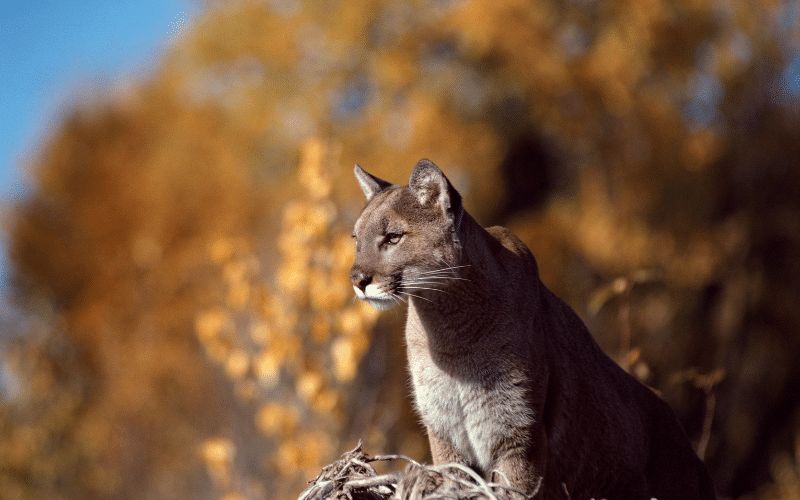Understanding mountain lions: Are they dangerous? Learn about their behavior, encounters with humans, daytime risks, habitats, and their interaction with dogs
The majestic mountain lion, a symbol of the wild unknown, captures the imagination of many. Often depicted in tales and legends, these creatures inspire both awe and fear.
Mountain lions, also known as cougars or pumas, are powerful predators native to the Americas. Known for their stealth and strength, they roam vast territories from forests to deserts.
While they can be dangerous, encounters with humans are relatively rare. Understanding these magnificent creatures helps in fostering coexistence and ensuring safety for all. The mountain lion plays a pivotal role, and through knowledge, we can learn to share our world with them more harmoniously. Here is a before you go guide.
Are Mountain Lions Likely to Attack Humans?
When exploring the great outdoors of North and South America, one might wonder about the likelihood of encountering, and potentially being attacked by, the elusive mountain lion, also known as the cougar or puma. Delving into historical data provides some perspective on this concern.
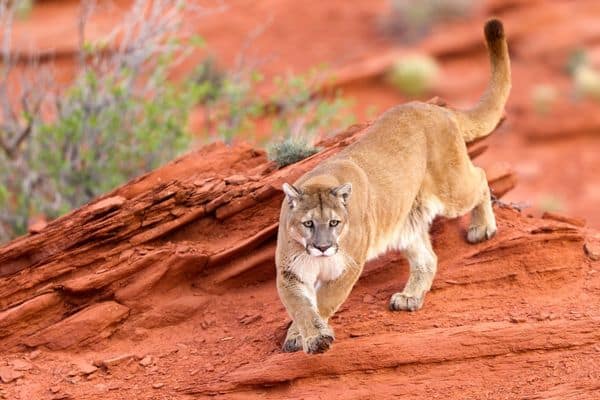
Statistically, attacks from mountain lions on humans are rare. According to the Mountain Lion Foundation, over the past 100 years, there have been approximately 125 recorded attacks in North America, with about 27 proving fatal. When contrasted with the large number of people engaging in outdoor activities in mountain lion territories annually, these numbers are relatively low.
However, specific scenarios can elevate the risk of an aggressive encounter. Mother mountain lions with cubs can be particularly defensive. If they perceive any potential danger to their young, even unintentionally posed by a human, they might act out of protective instinct. Similarly, a mountain lion that feels cornered or threatened in any way is more likely to display aggressive behavior.
What Should You Do If You Encounter a Mountain Lion?
If you find yourself face-to-face with a mountain lion, following these steps can help ensure your safety:
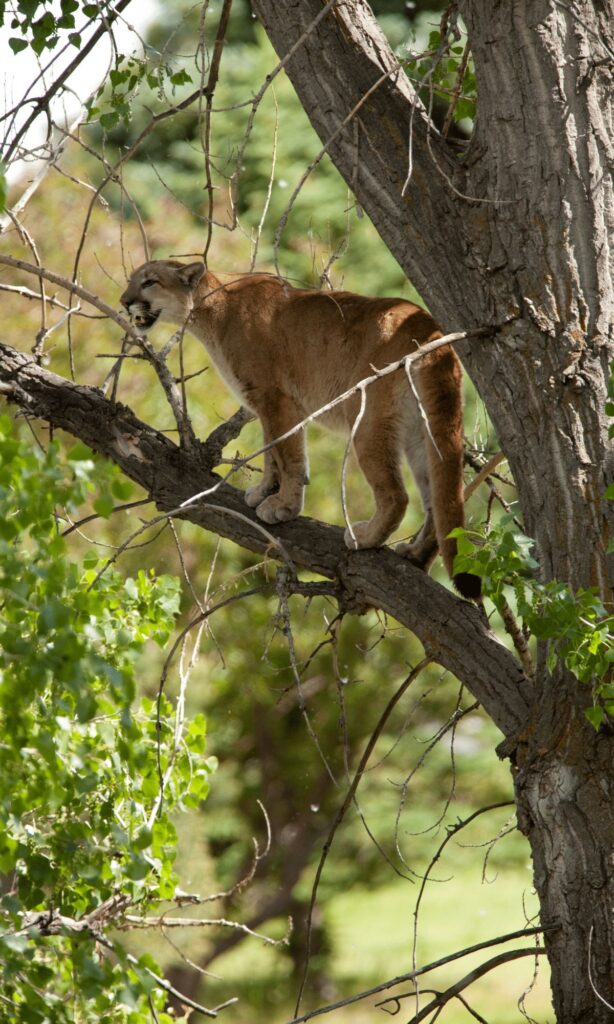
1. Lock Eyes: Always maintain eye contact with the mountain lion. This shows the animal you’re aware of its presence and can deter it from making a move.
2. Stand Tall: Do not turn your back or run. Instead, make yourself appear larger. Raise your arms and stand on your tiptoes if necessary. This can make you seem more intimidating.
3. Be Heard: Speak up! Use a loud, firm voice to deter the mountain lion. You can shout or yell, but always sound authoritative.
4. Retreat Slowly: While maintaining eye contact, slowly back away. Never turn your back on the mountain lion, as this can trigger its predatory instincts.
5. Defend Yourself: In the rare case the mountain lion decides to attack, do not play dead. Use whatever you have – be it a stick, rocks, or your bare hands – and fight back aggressively.
Remember, mountain lions are wild animals, and while encounters are rare, being prepared can make a difference. Always prioritize your safety and give these magnificent creatures the respect they deserve.
Are Mountain Lions Scared of You?
By nature, mountain lions are elusive animals with a built-in wariness of humans. Over generations, their survival instincts have taught them to be cautious, leading to a natural tendency to avoid human interactions whenever possible. This behavior isn’t unique to mountain lions; many wild creatures prefer to stay clear of humans, recognizing us as potential threats, even if we have no such intention.

However, as with all wild animals, certain situations can compel a mountain lion to act out of its typical character. A cornered mountain lion, for instance, might feel that aggression is its only way out, given that the instinct to fight or flee can be triggered if escape routes seem limited.
Another crucial scenario involves mother mountain lions with cubs. In the animal kingdom, maternal instincts are fierce, and a mother mountain lion is no exception. If she senses any form of danger to her offspring, even unintentionally posed by a human nearby, she might display defensive or even aggressive behavior to ensure their safety.
That being said, it’s crucial to remember that these scenarios are exceptions rather than the rule. In most encounters, if given enough space and an escape route, a mountain lion would choose to retreat rather than confront a human.
For those journeying into mountain lion territories, knowledge is power. Recognizing their natural inclinations and understanding the rare situations that might alter their behavior can provide peace of mind.
Respecting their space, moving calmly, and being aware of one’s surroundings can ensure that both humans and mountain lions coexist harmoniously in the vast expanses of the wild.
How Dangerous Are Mountain Lions to People in the Daytime?
Primarily, mountain lions are crepuscular, meaning they are most active during the twilight hours of dawn and dusk. This pattern is a survival adaptation, allowing them to hunt when their prey is most active while also avoiding the heat of the day.
Their nocturnal tendencies, coupled with their natural inclination to avoid humans, often keeps them out of sight during the daytime.
However, it’s worth noting that while their peak activity is centered around the night, daytime encounters are not unheard of. Various factors can lead a mountain lion to be active during daylight hours, such as the availability of prey, disturbances in their usual hunting areas, or young mountain lions trying to establish their territories.
It’s essential to understand that their behavior doesn’t significantly change based on the time of day. Whether encountered at night or during the day, their reactions are influenced more by the situation at hand than by the time of day.
Where Are Mountain Lions Found?
Starting in North America, mountain lions inhabit a diverse array of ecosystems. From the rugged, dense forests of the Pacific Northwest to the sunbaked deserts of the American Southwest, they’ve adapted to an impressive variety of terrains. They can also be found in the Rocky Mountains, and their presence even extends into parts of southern Canada.
As we move southward, their territory continues through Central America and extends deeply into South America. They are known to inhabit the vast grasslands of Brazil, the thick jungles of the Amazon, and even the cold, mountainous regions of the Andes. In fact, the mountain lion’s range culminates in the southern regions of Chile and Argentina.
Certain areas are known to have higher concentrations of mountain lions. In North America, for instance, regions like the Sierra Nevada in California, the coastal ranges of Oregon and Washington, and parts of Montana and Colorado have reported a notable presence of these big cats. Similarly, in South America, areas like the Amazon rainforest and the Patagonian region are known hotspots.
Mountain lions are versatile and adaptable predators. Their wide-ranging habitats, spanning from the northern reaches of Canada to the southern tips of South America, are a testament to their incredible resilience and adaptability. For adventurers and wildlife enthusiasts alike, understanding their habitats offers an enriching insight into the diverse ecosystems of the Americas.
Are Mountain Lions Dangerous to Dogs?
Dogs, particularly those of smaller breeds, can inadvertently fall into the category of prey for a mountain lion. Unlike humans, who are typically seen as a potential threat or a neutral entity by these big cats, dogs can resonate more with their predatory instincts. This inclination is heightened if the dog behaves erratically or runs, potentially triggering the mountain lion’s chase instinct.
Moreover, dogs often lead with their curiosity, venturing ahead of their owners or exploring areas off the trail, putting them at a higher risk of an unexpected encounter. The natural sounds and movements of a dog can attract the attention of a nearby mountain lion, especially if it’s lurking and assessing the environment for potential prey.
For pet owners, whether you’re hiking in mountain lion territory or residing in regions where they are prevalent, there are protective measures to consider:
- Leash Your Dog: When hiking, always keep your dog on a leash. This not only prevents them from wandering but also ensures you can control their movement if you sense danger.
- Stay Vigilant: Be aware of your surroundings. Watch for signs like mountain lion tracks, droppings, or scraped ground, indicating recent activity.
- Avoid Hiking at Dusk or Dawn: These are the times when mountain lions are most active, increasing the risk of an encounter.
- Safe Housing: For those living in mountain lion territory, ensure that your dogs have a secure place to sleep at night, such as indoors or in a sturdy kennel.
- Educate Yourself: Familiarize yourself with mountain lion behavior. Understanding these majestic creatures can help you better predict and prevent potential conflicts.
While mountain lions do pose a potential danger to dogs, with the right precautions and awareness, coexistence is entirely feasible. It’s all about mutual respect and understanding of the wilderness and its inhabitants.
Conclusion
Yes, mountain lions can be dangerous, but encounters with humans are rare, and they typically prefer to avoid us.
In this exploration, we’ve delved deep into the world of mountain lions. These majestic creatures, spanning territories from North to South America, are primarily elusive and prefer to keep their distance from humans. While daytime encounters are possible, they are mainly nocturnal animals.
Their interactions with dogs can pose risks, requiring caution from pet owners. Importantly, while mountain lions are not globally endangered, certain subpopulations face significant threats. Armed with this knowledge, outdoor enthusiasts can better navigate and appreciate the vast wildernesses they inhabit.

